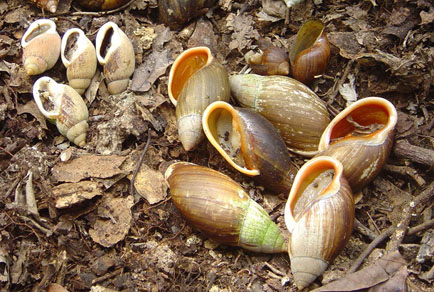Abstract
Land snails of the genus Placostylus Beck, 1837 are found only in the Western Pacific, from the Melanesian Plateau to New Zealand. While the ecology of the New Zealand Placostylus species is generally well known, having been studied for more than 20 years, and there is some published information on the one species of Placostylus from Lord Howe Island, there is very little published information on the six New Caledonian species. These New Caledonian taxa are all endangered, but their conservation is hampered by a lack of information about the life-history, biology and ecology especially relating to Placostylus bondeensis, P. eddystonensis, P. scarabus and P. caledonicus. The data that is available comes mostly from studies on the two remaining species - P. fibratus and P. porphyrostomus. Here we review what is known of the activity patterns, growth rates, life-histories, habitat use, nutrition, movement patterns and causes of population decline in these two species and collate the available information from the limited and mostly unpublished literature. The two species are threatened in different ways - Placostylus fibratus is favoured as food, and as a result, has been over-collected from the wild, while P. porphyrostomus is threatened by habitat modification and destruction, and by predation by introduced rodents. We make several recommendations for the conservation of New Caledonian Placostylus which ultimately may depend on the work we describe here on captive breeding and management. Translocations to predator-free sanctuaries coupled with augmentation of existing populations may be necessary to maintain populations of these species in the wild.

